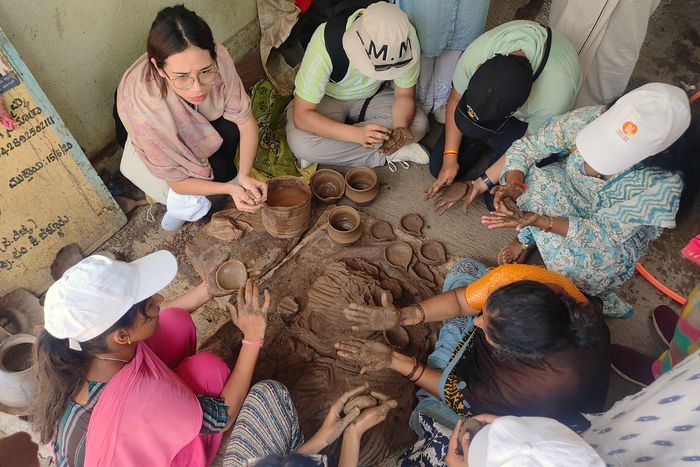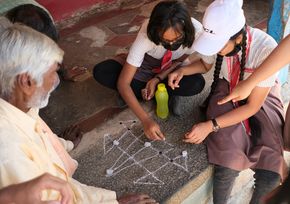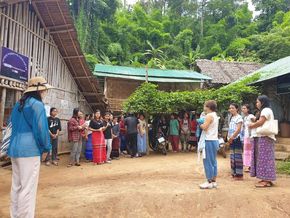By Sumesh Mangalasseri
Tourism is widely promoted as a driver of development, credited with fostering cultural exchange, generating employment, and stimulating local economies. However, the structural realities often diverge from this narrative. In many destinations, host communities have limited influence over how tourism is planned or managed. Strategic decisions are concentrated in distant corporate or governmental centres, while economic gains are disproportionately captured by external investors and local elites. As a result, local populations are frequently relegated to low-wage, seasonal employment, while facing rising living costs and a gradual erosion of control over land, resources, and cultural practices.
This imbalance has sparked the concept of ‘Community Based Tourism (CBT)’ which calls for communities to be more than “smiling hosts.” They become decision-makers, owners, and managers.
From “alternatives” to structural transformation
For decades, Community Based Tourism (CBT) was often framed as the “gentle alternative” to mainstream travel – mainly championed by NGOs. From village homestays and cultural workshops to eco-tours, these initiatives offered income streams and helped safeguard traditions. Yet, many remained confined to niche comfort zones: small in scale, fragile in structure, and too often reliant on donor support rather than building lasting independence. Too often, with only token participation from local communities, they had little control over pricing, marketing, or long-term strategy. Outsiders ran the show, while locals were reduced to providing the “experience.” The projects looked impressive in brochures but rarely shifted deeper power relations. The role of these small initiatives in policy regimes is also limited.
But today, community based tourism is slowly emerging with some clarity and purpose. It advances the idea that communities should not be treated merely as service providers, but recognized as political actors. CBT is not just an “alternative niche,” but could be a pathway to restructure how tourism functions.
Using the SDGs
Tourism spans the full spectrum of the 17 Sustainable Development Goals (SDGs). Yet on the ground, success is still measured in arrivals and receipts, while deeper questions remain: Who truly benefits? Are women decision-makers or poorly paid workers? Are landscapes protected or sacrificed for development?
CBT shifts the narrative by redefining success beyond visitor numbers or profits. It measures progress through justice, fairness, and sustainability – asking if communities have a real voice, if youth see a future for themselves, and if biodiversity flourishes alongside livelihoods.
Placing communities at the centre turns tourism into a platform for structural change. In a time of climate crisis and deepening inequality, business-as-usual is untenable. By measuring development in dignity, equity, and ecological integrity, CBT can push tourism to the core of sustainability debates.
The SDG framework offers a far more comprehensive set of criteria for assessing tourism’s impacts, both positive and negative. Crucially, these impacts must be evaluated locally, with community-based indicators rooted in the global framework. Positioning the SDGs as a benchmark for accountability can form the core of tourism advocacy. Unlike industry-led metrics, often growth-obsessed and biased, community-led assessments can reveal a truer picture of tourism’s effects.
A Changing Map of Global Tourism
For much of the 20th century, international long-haul tourism mainly flowed in one direction: from Europe and North America to the rest of the world. Today, that geography has shifted dramatically.
China illustrates the scale of change. In 2000, about 10 million Chinese travelled abroad. By 2019, the figure had risen to nearly 160 million. Even after the pandemic downturn, outbound travel surged back, with over 60 million trips recorded in the first half of 2025 alone.
India, too, is reshaping the industry. Its sustainable tourism market – just USD 31 million in 2023 – is projected to surpass USD 216 million by 2034, powered by hundreds of millions of domestic trips every year. These numbers signal a decisive transformation: Global tourism is no longer a “North-to-South” pipeline. It is also “South-to-North”, regional and domestic.
As markets diversify, advocacy must follow. Communities cannot rely only on Northern NGOs to mediate tourism’s impacts. Regional solidarity and South-South networks are also essential to ensure that the benefits and possible problems of this shifting map are measured not just in visitor numbers, but in justice, equity, and sustainability.
New forms of advocacy needed
For years, tourism advocacy was led by NGOs, civil society groups and church based networks mostly facilitated from global North or city centric in the South. They exposed sex tourism, child labour, and environmental abuse, amplifying Southern voices at a time when most travellers came from the North. Their impact was real, yet such models had limitations.
What is needed now are new forms of local advocacy: regional networks where grassroots, local governments (bottom levels of policy making bodies which have legal powers in many cases), universities, and ethical businesses collaborate. We need solidarity rather than charity, where locals define justice on their own terms; and interdisciplinary alliances linking tourism with culture, environmental justice, community rights, climate action, and indigenous movements. This is the next generation of tourism advocacy.
NGOs can play a vital role by facilitating such networks and by creating platforms where local voices can be heard collectively. They can bring together different players and facilitate community participation in broader debates on sustainability. NGOs should also continue to engage in policy interventions, lobbying for frameworks that protect community rights, ensure fair benefit-sharing, and safeguard natural and cultural resources. They should share their advocacy skills, experience and knowledge with communities that may not have access to such expertise.
Why community-based tourism must politicise
For CBT to move beyond slogans, communities must have four fundamental rights: the right to decide what kind of tourism is acceptable; the right to own and share in meaningful businesses; the right to manage daily operations, destinations (including carrying capacity), and the right to monitor impacts on culture, livelihoods, and ecosystems. Without these rights based approach, “responsible tourism” risks becoming little more than a burden on the hosts.
Its scale is already significant. But if CBT simply replicates market logic – chasing turnover and competing in price wars – it risks losing its purpose. Politicised CBT resists this by putting justice, dignity, and ecological stewardship above growth. It is a struggle to reclaim power, to move from the margins to the centre, and to turn tourism from an extractive industry into a positive force that dignifies rather than displaces.
The real question is no longer how communities can serve tourism. It is how tourism will finally serve communities. This is a call to imagine a future where communities organise, policymakers listen and travellers stand as co-creators, not consumers – a future where every journey is an act of responsibility and care.
Sumesh Mangalasseri is a tourism practitioner and researcher having 25 years’ experience in tourism advocacy. He is the founder and currently CEO of Suyatri Community Tourism, a social enterprise based in South India, promoting tourism programmes led by marginalised communities.













